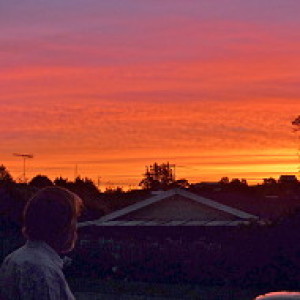This is the one
Just over a week ago, when S and I were driving homeward after the end of a late afternoon session at the writers festival, she had exclaimed about a colourful building she could see as we went past. A couple of days later I rode past on my way home when it was still daylight, and took a photo of a mirror glass building which obviously wasn't it.
This morning I had time before going to work at the community based service for a run, and chose to see if I could find the building she saw. There was little doubt that this is what she had seen. And she has since confirmed that.
It looks as if the coloured lights are in an open space like a deck. Yet, one would not think that every apartment owner/dweller would be happy to have all that light all night long, so it makes more sense to think that this is an office building, and its situation, just off Karangahape Road, could support that. Equally, it would support it being an apartment building as there are many others around this area.
Whatever the building's purpose, it was a striking sight as I came up the bridge over the motorways (and the pink cycleway; in the foreground of my photo).
Clinically a quiet day at the centre (I'm sure others were busy, but no urgent assessments were needed today). So I dealt with some admin (relief) and read some papers (stimulating), and discussed matters with other staff (felt useful). I had time to read a couple of papers which provide support for those who propose that one reason for the increased prevalence of depression in modern society is the lack of physical activity.
One of the papers found that there was a much greater likelihood of developing depression over a 10 - 12 year period in persons who did either no or little exercise, when compared to people resident in the same county of Norway who exercised for a minimum of one hour a day. Exercise above that amount did not confer greater resistance to depression.
The second one only had a very small number of patients with depression, but suggested strongly that exercise added to standard biological and psychological interventions, doubled the rate of remission, and reduced the no response rate by two thirds. This paper also proposed a mechanism; one which makes sense.
Opportunities present themselves in unusual ways.

Comments
Sign in or get an account to comment.


